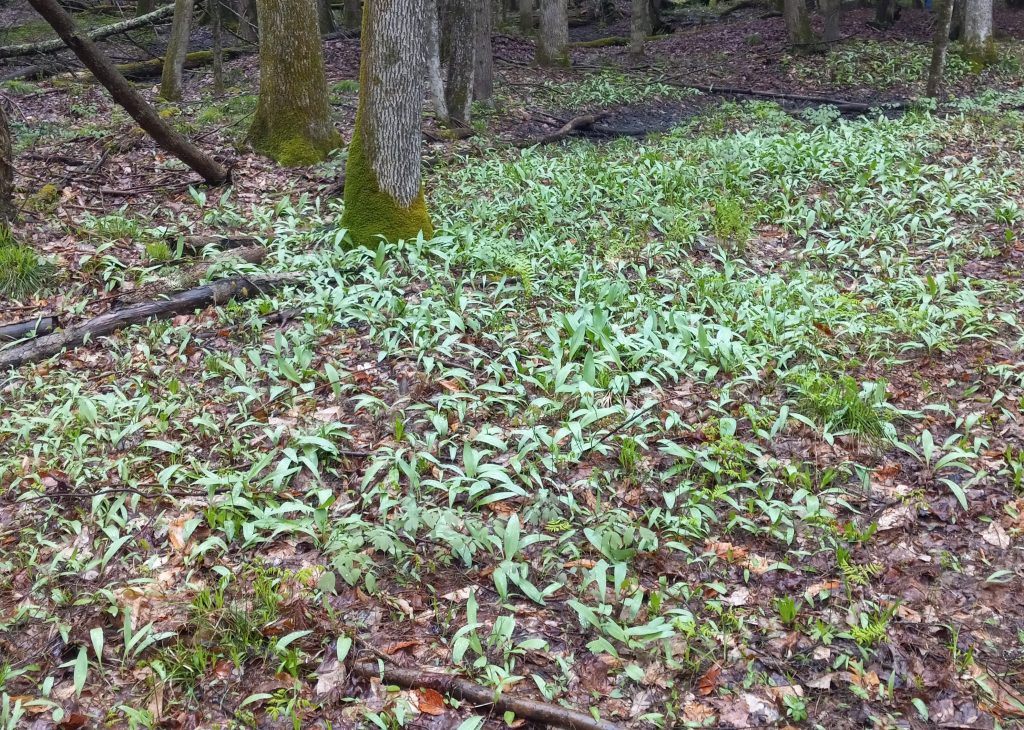DISCLAIMER: This post is NOT a definitive source of instruction in the foraging of wild food. It is simply a recounting of what I have done. If you wish to forage wild food, seek out in-person instruction in your own area.
Late spring is when some wild plant foods become available for harvest. After the snow recedes and the soil begins to warm, a few of the first edible wild plants begin to emerge. If you know where to look and how to identify the plants you seek, you can have some variety in your diet long before a traditional garden is ready.
A plant that has edible parts available almost all year (although not always palatable) is the common cattail (Typha latifolia). In the spring, the tender inner parts of the young shoots with the outer leaves removed can be used like celery or asparagus. These distinctive plants can be found in many wet places but be sure that the water source is clean should you choose to harvest any of these plants. Other parts can be harvested at different times of the year but the young shoots in spring can be an interesting additional food source. These distinctive plants can also be extremely photogenic, especially if there are still some stalks from fall standing, and they can provide a contrast to trees, shrubs, or water in a landscape composition.

One of my favorite plants for cooking with red meat is Allium tricoccum, known regionally as ramps or wild leeks. The lance-shaped leaves and the bulb have a distinctive onion/leek/garlic aroma and flavor. The taste is sharp when fresh but mellows with cooking. Patches normally grow in moist forested areas and I have observed sizes range from several square feet to several square acres. Like most wild plants they are self-seeding but spread slowly. Harvesting should be judicious for that reason. The plant leaves rarely reach 6 inches in height so wide area photography is difficult since they blend into the overall landscape. But they are good candidates for macro photography, especially when the white flowers are in bloom.
The coiled fronds of young ostrich ferns (Matteucia struthiopteris) are known as fiddleheads due to their resemblance to the scroll of a violin. They can be collected when about 6 inches tall (or less) and still tightly curled. I have seen people boil or saute them and the flavor has been compared to asparagus. Personally, I am not fond of them (I don’t like the taste) but many people enjoy them. Each palate is different. But they are beautiful and I think they are particularly attractive in the foreground of field and forest photographs.
Foraging wild plants is an interesting and rewarding endeavor but one that requires specific instruction and patience. Photographing the spring landscape is also interesting and rewarding in a different way, as well as having a learning curve and requiring patience. People can succeed at one or both if they devote the appropriate time.
